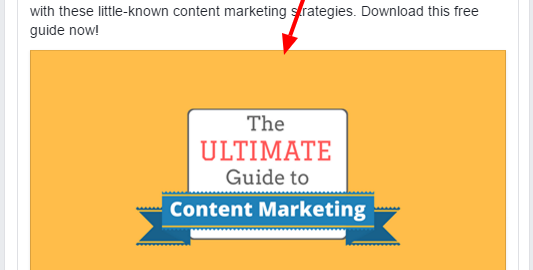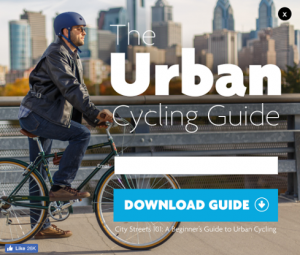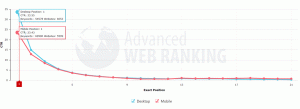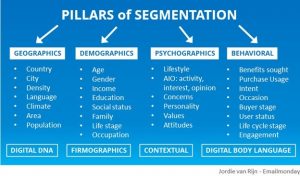September 16, 2016
If you’re looking to generate more leads from people in your target market, Facebook offers a solution that can make your life a whole lot easier. It’s called Facebook Lead Ads.
I have been running them for clients and my company for sometime now and the results have been great.
The most important thing to keep in mind about Facebook Lead Ads is that they don’t just make it simple for you, the business owner, to promote your brand. They also make it easy on people in your target market to provide key contact information. That’s probably the most important selling point.
Also, Facebook has so much inventory! You can target any type of customer on the site.
The key, target them in the right way, at the right time, to get them to convert.
In this article, we’ll cover how Facebook Lead Ads work and how you can get started using them.
How Facebook Lead Ads Work
How is it that Facebook Lead Ads make it a snap for you to collect data from people in your target market?
Two words: pre-filled forms.
As a great digital marketer, you probably already know that the less work people have to do to complete the conversion process, the more likely they are to convert. Facebook Lead Ads operate with that principle in mind.

When prospects click your call to action (CTA) button on a Lead Ad, Facebook pops up a traditional form that the user would have to fill out. Except the user might not have to fill it out at all.
Why? Because Facebook pre-fills fields on the user’s behalf.
For example, Facebook already knows the first and last name of the user. So, if those fields are on your form, then they’re pre-populated. Other key information that you request will also be pre-populated if Facebook has that information in its database.
The bottom line: you can present the prospect with a form that’s completely pre-filled so all he or she has to do is click a button.
How’s that for great marketing?
Create a Privacy Policy
Before you can use Facebook Lead Ads, your website needs a privacy policy.
Basically, a privacy policy is a bit of legalese that informs website visitors about how you collect data from them as they’re browsing around your pages.
You’re required to have a privacy policy if you want to use Lead Ads because Facebook has rules about how you can use the information you obtain from prospects.
For example, you’re not allowed to sell the data you collect to a third party. Also, there are certain questions that you can’t ask people.
Use Power Editor
Another prerequisite to running Facebook Lead Ads: you must use the Power Editor.
Hopefully, though, you’re already using the Power Editor (among other tools). It’s a great way to create highly targeted ads that run on the Facebook platform.

If you’ve never used the Power Editor before, just point your browser here and start using it for the first time. Facebook offers new users a friendly guide.
Create Lead Ads Like Other Ads
If you’ve already created other types of Facebook ads, then you’ve got a nice jump on the learning curve. That’s because you start by creating a Lead Ad just as you would create any other type of ad.
Begin by selecting “Collect leads for your business” as the objective for your campaign. That’s how you tell Facebook that you’re running a Lead Ad instead of another type of ad.
Once you’ve done that, select people to target in your campaign. Basically, choose who you want to see your ad based on demographics and interests.
If you’re a power user, you might opt to use a Facebook custom audience. It’s not likely you’ll want to do that, though, because a custom audience includes people who are already your customers. If you’re using Lead Ads, you’re looking for new customers.
As with other ad formats, you have the opportunity to tell Facebook when to run your ad and set your daily spend limit.
Once you’re done with the initial setup, click on “Choose Ad Creative” to continue.
Design Your Form
On the page where you normally include your ad creative, you should see a section entitled “Lead Form.” In that section, click on the “Create Form” button.
A window will appear giving you the choice between creating a new form or duplicating an existing form. Obviously, if you’ve never created a form in the past, you can only create a new form, so leave that option selected and click “Next.”
The next window gives you the opportunity to name your form and select the language of your target market. Once you’re done filling out that section, click “Next” again.
The following window is where you choose which fields will appear on your form. You’ll get plenty of options from Facebook, but you can also add your own custom fields.
Pro-tip: Keep the form simple to maximize conversions.
Once you’re done selecting the fields you want to include on your form, click “Next” yet again. The window that appears will ask for the link to your privacy policy. Just copy and paste the link into the field.
On the next window, you’ll be asked for your website’s URL. Enter that and click “Next” yet again.
On the following window, you’ll have the option to add a context card to your Lead Ad. That’s where you put your “carrot” that incentivizes people to click on your CTA button.
For example, if you’re in the weight-loss niche, you might offer a free, 20-page PDF that describes the foods most likely to make people fat. When people complete the conversion process, you’ll send a link to their email so they can download the PDF.
After all that, you’re finally done! You’ll get a preview of your form so you can see what it looks like to prospects. If you like what you see, click the “Done” button and your form will be saved as-is.
Time to Place the Order
Just because you have a form, that doesn’t mean you have an ad. You still need to give Facebook the green light to run the Lead Ad.
You should see a “Place Order” button at the bottom of the page. Just click on that and your ad will begin running with the specifications that you selected.
Congratulations!
You’re now running a Facebook Lead Ad. Just be sure to split-test your Lead Ads as you would any other type of ad.
Digital & Social Articles on Business 2 Community(102)







